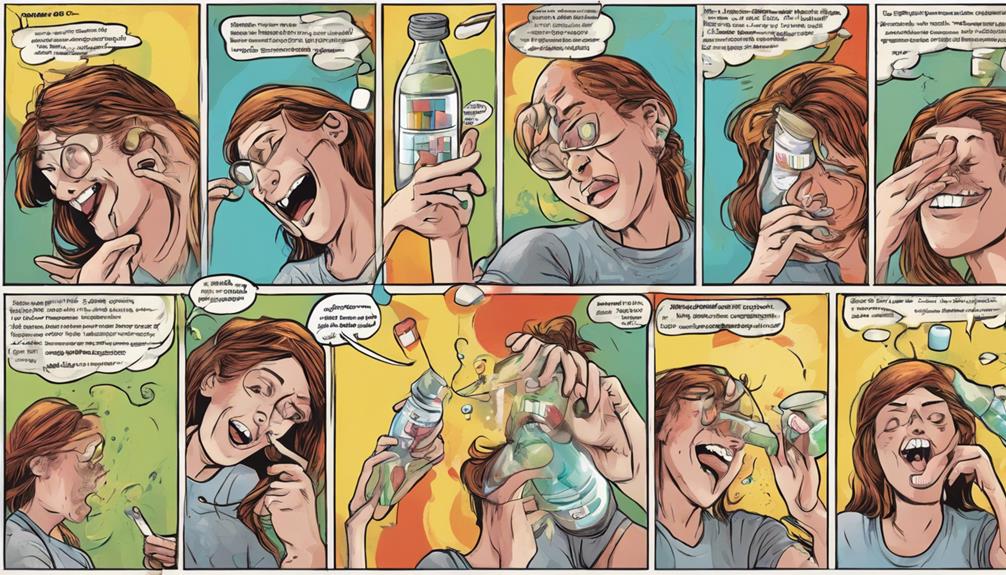Are you ready to transform your learning experience? Dive into the realm of innovative information organization! Begin by creating visually stimulating concept maps to easily connect complex ideas. Then, enhance your memory with mnemonics such as memorable acronyms and rhymes – making studying more enjoyable. Remember to utilize personalized acronyms for an added memorization boost! Additionally, explore the effectiveness of infographics, combining text and visuals for a dynamic learning journey. By incorporating these techniques, you will not only streamline your learning process but also make it incredibly engaging. Keep an eye out for more strategies to enhance your comprehension and effortlessly master new concepts!
Key Takeaways
- Utilize concept maps to visually connect ideas for better understanding.
- Employ mnemonics to recall information easily with catchy phrases.
- Design infographics to simplify complex data into visually appealing formats.
- Combine concept maps, mnemonics, and infographics for engaging learning experiences.
- Embrace creative information organization techniques for enhanced comprehension.
The Power of Concept Maps

Discover the potential of your learning by harnessing the power of concept maps, an artistic and visually engaging tool that enhances comprehension and retention of complex information.
Concept maps are like a colorful roadmap for your brain, helping you connect ideas and see the big picture. By drawing lines between related concepts and using images or symbols, you create a visual masterpiece that makes studying fun and effective.
Imagine linking historical events with key figures through lines filled with interesting facts or creating a mind map of scientific processes that flow seamlessly from one step to the next. With concept maps, you're not just studying – you're creating a work of art that boosts your understanding and memory retention.
Mnemonics for Memory Enhancement

Enhance your memory skills with fun and effective mnemonics, aiding in the retention of sequences, hierarchies, and concepts. Mnemonics are like secret codes that activate your brain's ability to remember important information. Check out this table below for some cool mnemonic examples:
| Mnemonic Type | Example | Usage |
|---|---|---|
| Acronyms | 'ROY G BIV' for colors | Remembering lists |
| Rhymes | 'Thirty days hath September' | Sequences |
| Acrostics | 'Every Good Boy Does Fine' | Hierarchies |
Leveraging Acronyms in Learning

To apply acronyms effectively in learning, start by selecting key concepts that can be represented by letter sequences. Acronyms are fantastic tools for remembering lists or categories.
For instance, imagine learning about the five stages of grief: Denial, Anger, Bargaining, Depression, and Acceptance. You can create an acronym like 'DABDA'. It may seem silly, but it sticks in your mind!
Acronyms like 'HOMES' for the Great Lakes (Huron, Ontario, Michigan, Erie, Superior) can make recalling information a breeze. Personalize your acronyms to make them more memorable and meaningful.
Using acronyms in your study routine can add a fun twist to learning and help you retain information more effectively. So, go ahead and get creative with your acronyms!
Infographics for Visual Learning

Infographics provide a visually engaging way to organize and present information effectively. Here are four reasons why infographics are perfect for visual learning:
- Simplify Complex Information: Infographics break down complicated concepts into easy-to-understand visuals, making learning more accessible.
- Enhance Retention: By combining text with images, infographics stimulate both visual and verbal processing in your brain, helping you remember the information better.
- Inspire Creativity: Designing infographics allows you to tap into your creative side by choosing colors, images, and layouts that resonate with you.
- Cater to Different Learning Styles: Visual learners thrive with infographics, as they offer a dynamic way to absorb and comprehend information effectively.
Implementing Creative Information Organization

Engage in various creative techniques to effectively organize information for a more captivating learning experience.
When it comes to implementing creative information organization, think outside the box!
Incorporate concept maps to visually connect ideas, making complex topics easier to grasp.
Mnemonics are like memory superheroes, helping you recall information with catchy phrases or acronyms.
Infographics blend all these tools into one visually appealing masterpiece, making learning fun and efficient.
Remember, learning can be exciting when you mix and match these methods to suit your style.
Immerse yourself in the world of creative information organization, and watch your understanding soar to new heights!
Frequently Asked Questions
How Can I Create My Own Unique Style for Concept Maps?
To create your unique style for concept maps, experiment with colors, symbols, and layouts. Personalize the maps to fit your learning preferences. Incorporate your creativity by adding images and designing a format that resonates with you.
What Types of Mnemonics Work Best for Memorization?
To boost memory skills, harness the power of mnemonics! Craft catchy acronyms or silly phrases; they're memory magic. Engage your brain, have fun, and watch facts stick like glue. Get mnemonic, get smart!
How Can I Personalize Acronyms to Suit My Learning Style?
To personalize acronyms for your learning style, connect concepts with letters that resonate. Use meaningful words or phrases that stick in your mind. Make it fun and relatable to increase motivation and retention.
What Tools Can I Use to Design Visually Appealing Infographics?
To design visually appealing infographics, you can utilize tools like Canva or Adobe Spark. These platforms offer templates for integrating bullet-points, concept maps, mnemonics, and acronyms. Enhance information presentation with vibrant visuals.
How Can I Effectively Implement Creative Information Organization Strategies?
To implement creative information organization effectively, start with bullet-points for sequencing, create concept maps for visual clarity, use mnemonics for fun memory aids, develop personalized acronyms for retention, and design infographics for engaging presentation.
Conclusion
So, there you have it! Who knew that organizing information could be so invigorating?
The potential of concept maps, mnemonics, acronyms, and infographics has the ability to completely transform your learning experience.
It's time to harness your creativity and take control of your education in a whole new way.
Let's revolutionize learning together and make studying a fun and engaging adventure. Who knew organization could be so revolutionary?










